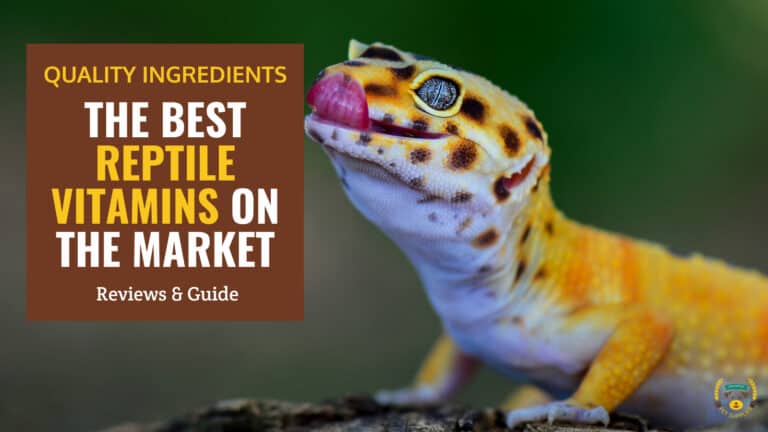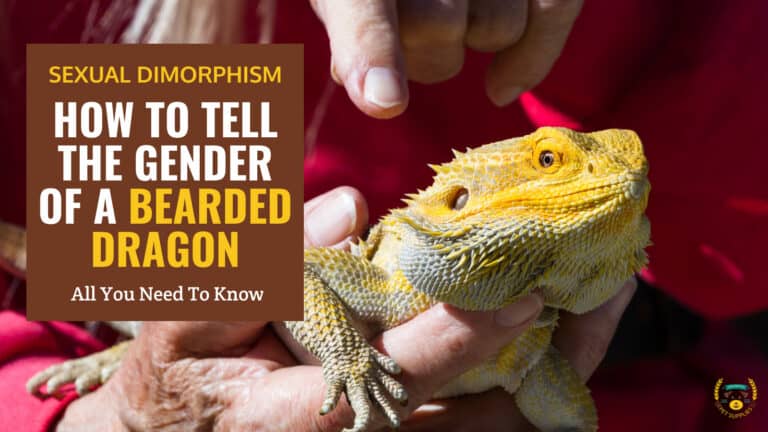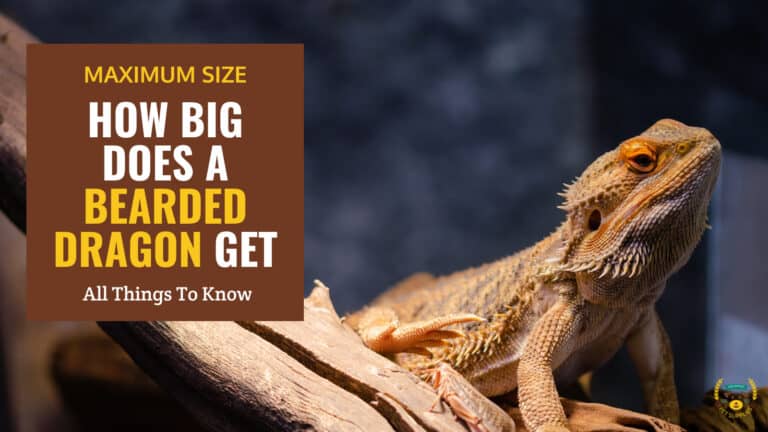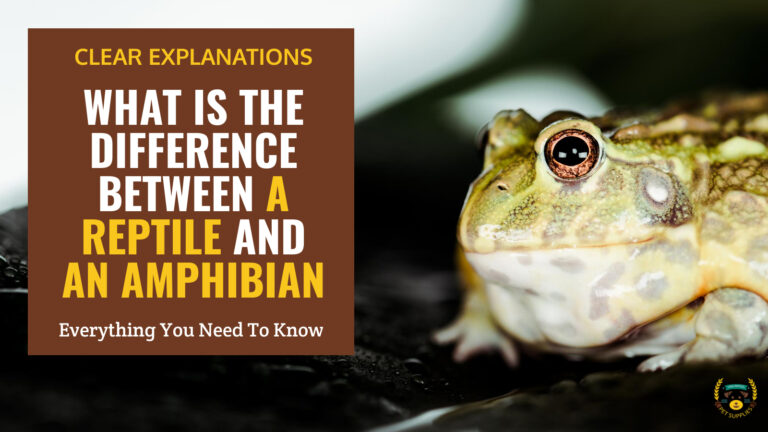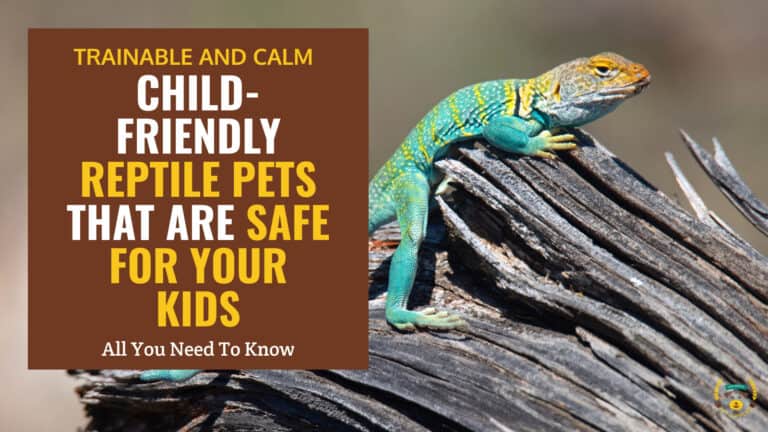Banana Ball Python Morph: Facts, Size, and Care Guides
Last updated: April 11, 2024
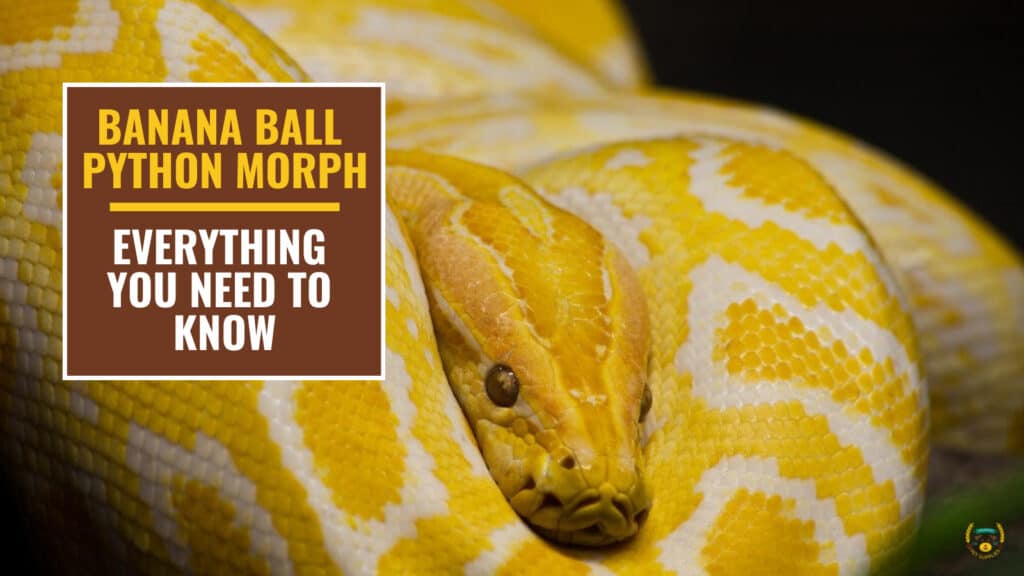
Summary
- Banana ball pythons are a breed of ball python that are genetically mutated to have a banana-like yellow to orange color.
- They are one of the largest pythons in the world, with males reaching up to 5 feet in length and females reaching up to 6 feet.
- Banana ball pythons are relatively easy to care for, but it is important to provide them with the proper environment and diet.
- Their enclosure should be at least 30-60 gallons in volume and should contain at least three hides with different temperatures.
- The humidity in their enclosure should be kept around 50-65%.
- The temperature should be kept between 60 and 85 degrees Fahrenheit.
- Banana ball pythons are carnivores and should be fed frozen/thawed mice.
- They can live for up to 30 years in captivity.
So, you want to welcome a regal pet and want some information about them at your home. Go ahead and read the guide about the Banana Ball Python Morph.
Banana Pythons were named due to their banana-like colored skin. They have nothing else relevant to the yellow fruit.
A fun fact about Banana Ball Python is that it had been used as a bracelet by Queen Cleopatra. That's why its scientific name is Python Ragius.
This is a guide for banana ball python enthusiasts to help them get started with keeping their reptiles happy and healthy. This guide includes everything you need to know about feeding, housing, and maintaining your pets and what they like and dislike to eat.
Appearance:
The beautiful creature is a breed of ball pythons that are genetically mutated. Read about its color down here:
Color
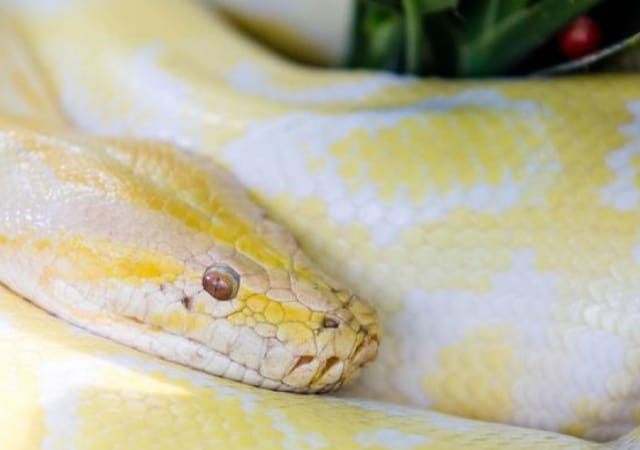
The banana ball python is one of the largest pythons in the world. Its name comes from its color. Its skin turns from yellow to orange, then brown. (Think of a healthy banana getting rotten). Just kidding, their name comes from their large mouthfuls, which look like bananas. The male is brownish-green with black markings, while the female is yellowish-brown with some black stripes.
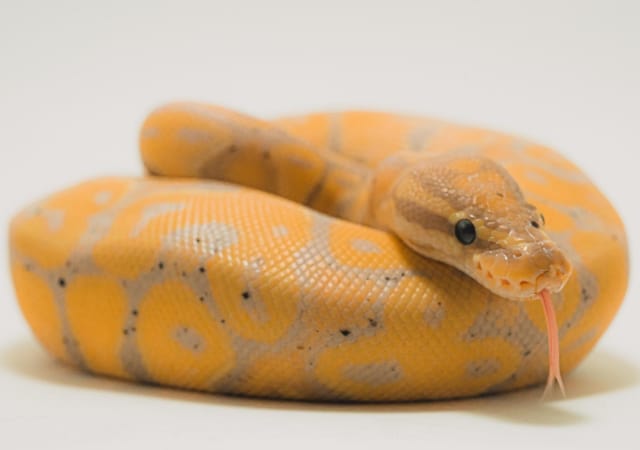
Size
The length of the banana ball python can be as long as 3-5 feet and as thick as 2.5 inches. People have recorded their female's size to a foot or half longer than the males.
Weight
The male Banana ball python can weigh around 12-14 pounds, while a female can go up to 16 pounds. Reptile owners have recorded banana ball pythons weighing up to 25 pounds.
The DNA game :
The Banana Ball Python is a genetically unique animal. They can be reproduced in two ways. First, they can have a dominant mutation, which is when one of the parents is Banana and the other one is a normal ball python. This way all the offspring will be Banana because their DNA would contain 1 Banana and 1 normal allele.
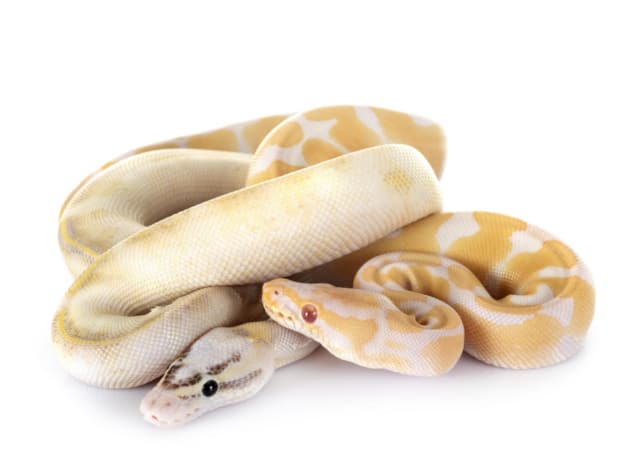
However, if you breed a dominant Banana Ball Python with another Banana Ball Python, the result will be 50% Banana Ball Pythons and the remaining 50% will have 25% of super bananas and 25% of Normal Ball python as offspring. This is called codominance. .
Where and How to Keep Them?
Maintaining the living area for this beautiful creature can be a task to be handled efficiently. Their enclosure must be appropriately and regularly managed to keep these pets active and lively.
Banana Ball python, as a pet, would like to live in terrariums, racks, or tanks. An enclosure of 30-60 gallons volume is the best choice to keep the bananas (no, not literally!). Don't forget to keep them separate unless mating is expected.
Hides:
Their enclosure must contain hiding places for natural procedures like shedding, hibernating, mating, giving birth, etc. It is advised to place at least three hides with different temperatures.
Substrate:
Due to problematic burrowing or meal time, keeping sand as a substrate in a banana ball python tank is strictly prohibited. Instead, a 3-5 inch layer of Orchid Bark and cypress mulch as the substrate is preferred.
Hydration:
Your banana ball python is a cleanliness freak. Keep the water bowl filled with clean water wide enough to let your pet curl and move freely.
Factors Affecting Life Quality:
Your pet is a being that likes to get pampered. Therefore, it will keep you happy and contented. However, you should remember the factors affecting the banana ball python's quality of life.
Humidity
A single water bowl cannot maintain perfect humidity in your Python's tank. Therefore, you must keep your Banana's enclosure highly humid to around 50 to 65%.
A misting system or an electrical humidifier can be a better choice. Remember, you keep the humidity sources near the hot side of the tank to keep your lovely pet away from respiratory infections.
Temperature and Lighting
Most Banana Ball Pythons can tolerate temperatures as low as 60 degrees Fahrenheit. However, they don't like temperatures above 85 °F. Using heating equipment such as basing bulbs, day heat bulbs, and an under-tank heater, you can control the temperature.
Keep in mind that you must place the bulbs and other heating equipment out of reach of your Python, preferably outside the enclosure with a layer of reptile carpet in between the glass and the heating source.
Direct access to heating sources might cause your pet a burn or an accident.
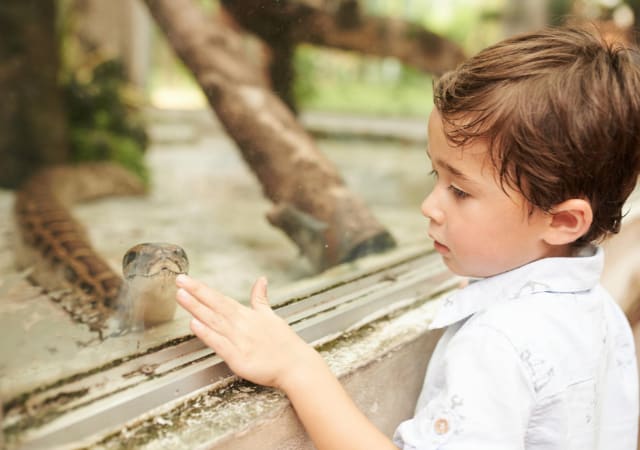
Cleaning
Their habitat needs a regular cleaning spree. Banana ball pythons are sensitive to mites and other unknown guests on their skin. In addition, the water facility in their enclosure needs to be changed daily since they bathe in that bowl and have curling-up sessions.
Lifespan
Banana ball pythons typically live between 20 and 30 years. Never a snake of this species has lived more than 30 years. Captivity is a difficult time in one's life, but if you keep them happy and healthy, taking care of their needs, this colorful companionship can live exceptionally long.
Attitude
Banana ball Pythons don't bite unless they are compelled to do so. They are friendly and harmless to unknown people unless given a chance to harm.
Being related to a wild-by-nature family, they can get aggressive when more than one banana ball are kept together.
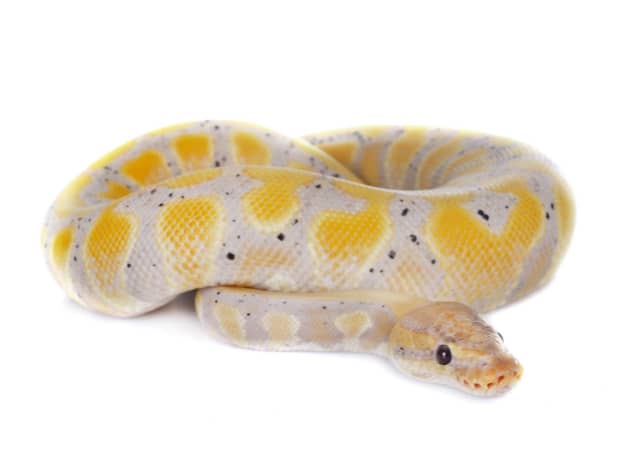
Diet:
There is a difference between a snake that eats by hunting its prey and the one which is provided its food in a plate.
Pythons, carnivorous in the wild, can hunt anything that comes in their path; however, in captivity, our snakes only like to have rodents in their meals.
Live mice as food can have sound effects on our snake's health, but we have to be cautious about the cuts and bites they can get during the 'hunt.' So, it's better to provide thawed and frozen mice to your banana ball python to keep them away from any accidents.
Breeding Process:
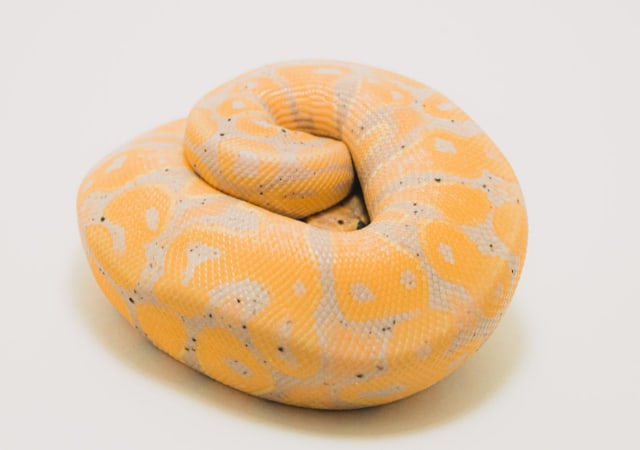
Captivity has the drawback that it mimics nature poorly. For example, to start the breeding process in a banana ball python, you have to create a scene of the wild in their enclosure—Pythons mate when they experience a food shortage or temperatures drop.
You must keep an eye on the temperature when they finish mating and have eggs. This period is known as brooding. A rise in temperature to 86-88 °F should make the female snake sit on her eggs.
Since Python makes 11 babies in one go, it is advised to segregate them after hatching, considering their solitary nature.
Bad Care Leads to Ailments
Pets usually need to be taken care of efficiently, and the banana ball python is no exception. As a result, they may get upset and show tantrums like every other being on similar behavior. A dirty tank is one of the reasons.
Respiratory Infections
Seeing some whitish substance around their mouth cavity or respiratory tract may indicate some respiratory problem. If they are rubbing their body, you should contact your vet on an emergency basis.
Skin Infections/ Mites
Banana ball Pythons can get mites in between their scales on the return to their tank from the garden. This leads to irritation or skin infections.
Eye Infection
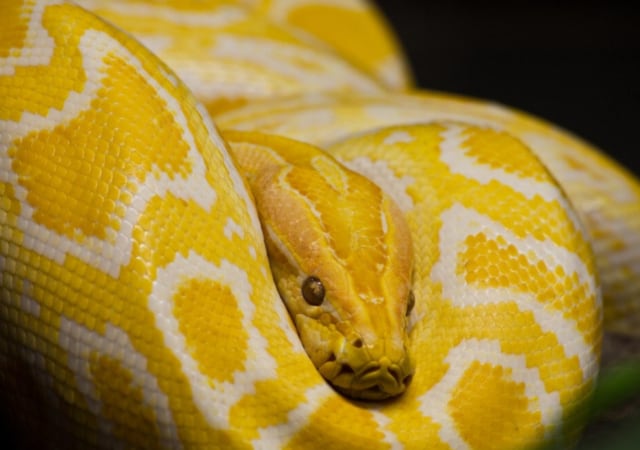
Your Python can see red color objects, so instead of placing red color night bulbs in their tanks, try blue or purple night bulbs.
Placing red color night bulbs may cause vision problems at some point in their lives, and a disturbance in the biological clock might also happen.
The key to keeping them disease-free is to keep their enclosure clean and clear like a window pane. In addition, a regular inspection of your pet and its habitat is advisable.
Banana Ball Python Price
You can find your favorite pet for as low as $100 from a banana ball breeder. This is the price for a baby banana. An adult banana ball python may cost around $250 to $350. A special morph ( scaleless banana ball python) can go as high as $3,500.
Where To Find Banana Ball Pythons?
If you are going to get one in person, look out for these points in your potential pet:
- Clear Eyes
- Rounded Body
- Bones Not Showing
Don't forget to inspect the temperament of the snake by taking it in your hands. If it shows aggression or curls up into a ball, it may be stressed. On the other hand, a calm and healthy banana will be steady yet move slowly, flicking the tongue sometimes.
However, if you want your banana buying experience hassle-free, book an online order at CB reptiles. They guarantee a fully captive breed of banana ball python fed with high-quality food.
FAQs:
If you still have some questions in your mind about banana ball python, you may find answers here:
- What is Codominance?
Co-dominance is a widespread phenomenon in the animal kingdom. The appearance of the traits of the same gene in two different individuals within a population, regardless of which parent it is inherited from, is called codominance.
- Are all banana ball pythons male?
No, bananas can either be female or male. Both sexes mate and produce, and the females brood.
There was a time in recent years when most of the bananas left were females. The males were sold for $60,000.
- Why is My Ball Python Refusing its Meal?
Stress and the wrong prey size can be why your banana ball Python is reluctant to eat. If your pet has a loss of appetite, don't offer him/her a big rodent. It's a choking hazard and can be fatal.
- How Long Can a Banana Ball Python Go without Eating?
Biologists recorded the Python going without food for months. It's also the practice of this species in the wild.
- Is Coral Glow and Banana Python the Same?
No. Coral Glow Ball Python and Banana Ball python are two morphs of the ball python category. It's only a slight genetic mutation that gave them different names. Coral glow is a designer morph; that's why it's somewhat higher in price than bananas. Another difference is in their pattern of laying eggs. Coral glow lays 5-10 eggs, while banana ball Python lays 11 or around eggs.
Conclusion:
Banana Ball Pythons are great pets if you want a reptile that won’t bite. They are usually harmless to humans. They are popular pets because they are so docile and easy to care for. You can even buy these beautiful creatures as a present for someone else. They come in various sizes and colors and are easy to breed.
Exotic pets like banana ball pythons are fascinating creatures that can be intimidating and costly to maintain (if you choose the designer ones). The trick is to get it right to keep your animal happy and healthy. First, however, it would be best to keep it somewhere to supervise it while it grows.

